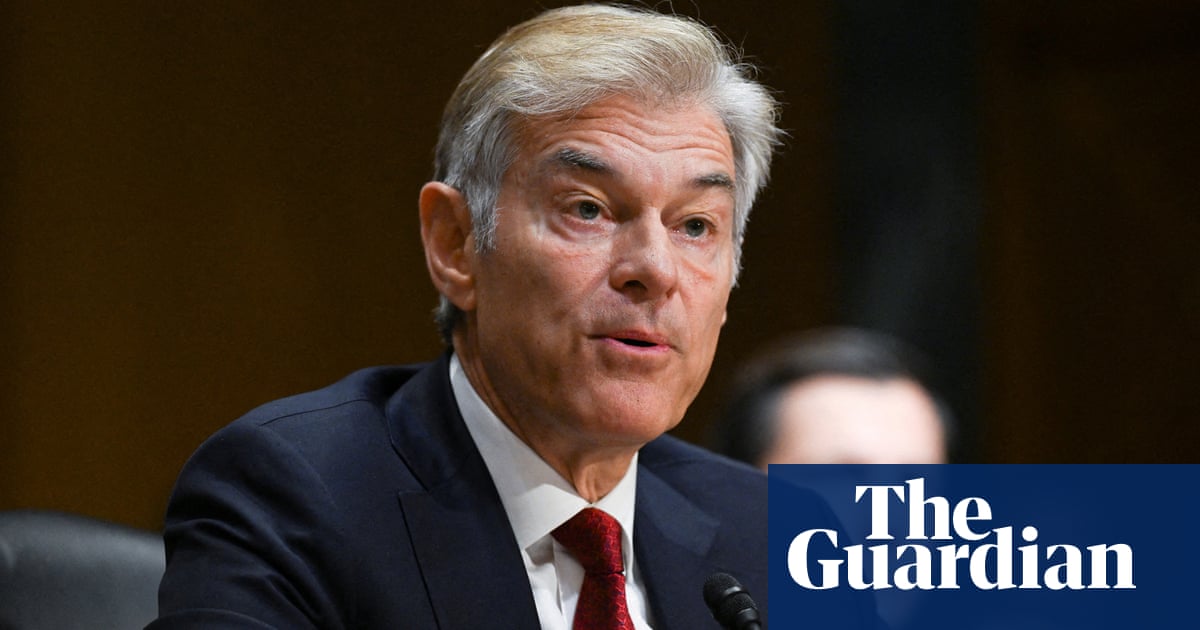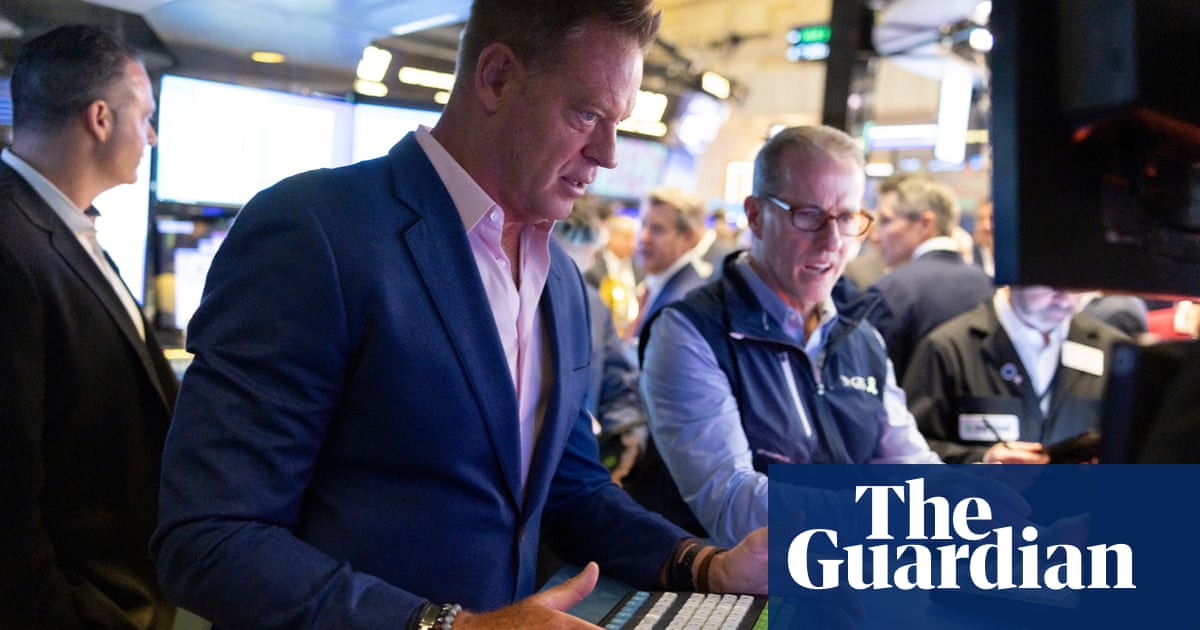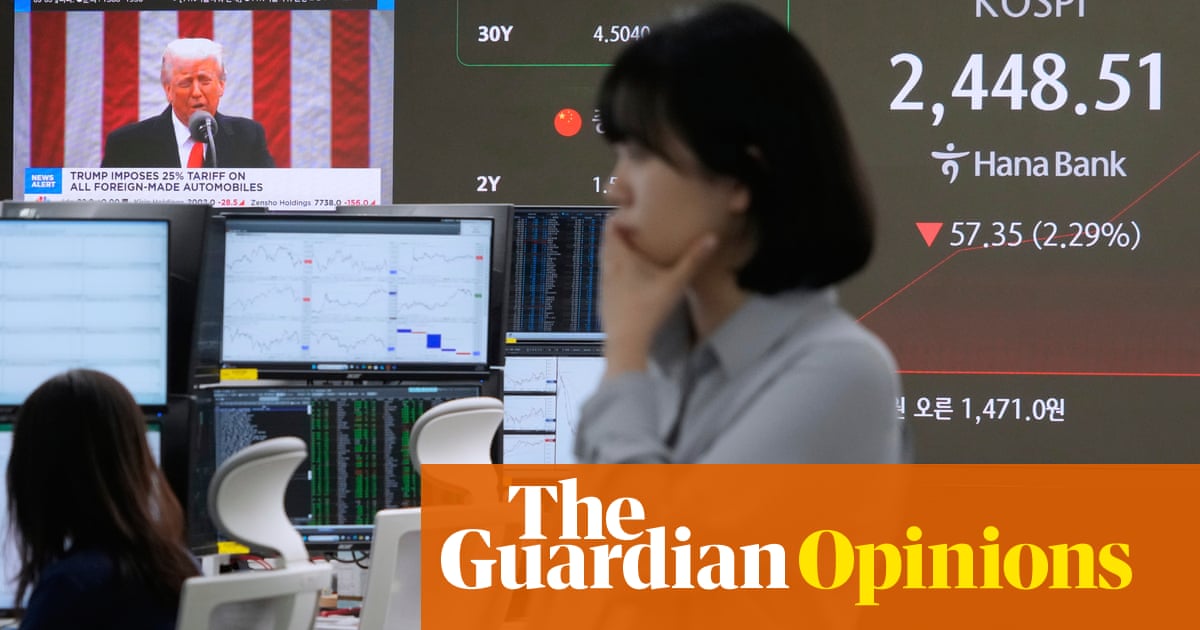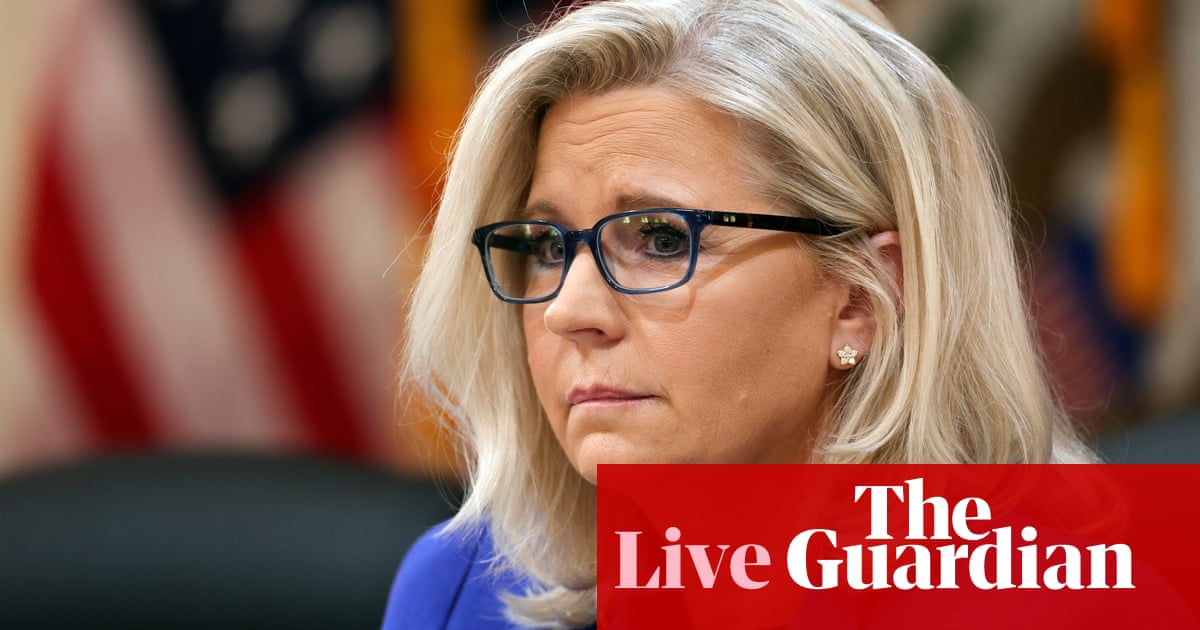Global markets and businesses were reeling on Thursday, as US president Donald Trump announced sweeping tariffs on major trade partners and struggling countries alike.
Trump’s new policies set a baseline tariff of 10% on all goods coming into the US, taking the a maximum rate to more than 50% on imports from some countries. It marks the biggest upheaval of global trade norms since the second world war. The US president said that these levies were aimed at targeting decades of unfair trade practices which had disadvantaged the US.
The 10% universal tariff will go into effect on 5 April while the “reciprocal tariffs” on specific countries will begin on 9 April.
Trump has imposed a 20% tariff on goods from the European Union. Mexico and Canada escaped Wednesday’s whirlwind but will still be subject to 25% tariffs imposed earlier this year.
The reaction to the upending of decades of US foreign and trade policy has been swift and dramatic, with Asian markets plunging on Thursday morning. You can follow the latest on our business liveblog.
Here we break down the individual responses by country to the new global economic order as they come in.
China
China has been hit particularly hard by the new tariffs, which take the total levy on Chinese imports to over 50%.
China’s commerce ministry called for Washington to “immediately cancel” the tariffs, warning they “endanger global economic development” and would hurt US interests and international supply chains.
“There is no winner in a trade war, and there is no way out for protectionism,” the ministry said. Beijing has promised countermeasures.
The US will impose a 34% tariff on Chinese goods, on top of the 20% that had already been imposed earlier this year.
Wang Wen, dean of Renmin University’s Chongyang Institute for Financial Studies, said China had become accustomed to US tariffs over the past seven years. “But these high tariffs have not reduced the US-China bilateral trade volume as well as China’s trade surplus with the US … most Chinese people believe that the US tariff war against China is ineffective.”
Wang speculated that potential Chinese countermeasures could include reciprocal tariffs, devaluing China’s currency, and further restrictions on the export of certain rare earths to the US.
Trump also closed the so-called “de minimus” loophole, which allowed goods worth under $800 to be imported to the US duty-free. More than 90% of all packages coming to the US enter via the de minimus regime, with about 60% of them coming from China. This exception had allowed fast-fashion companies like Shein and Temu to enjoy booming business in the US. Shein is the biggest e-commerce company in the US and contributed an estimated $570m to the US economy in 2023, according to Oxford Economics, a consultancy. But it will see its business model cratered by the closing of the loophole, which takes effect on 2 May.
UK
Donald Trump has hit the UK with tariffs of 10%. Downing Street, which had been expecting a 20% rate to be imposed, expressed relief to have escaped the higher rate. Keir Starmer’s more conciliatory approach to the Trump administration appeared to have paid off.
However, the UK’s growth forecasts are likely to be downgraded as a result, and the tariffs could cost thousands of jobs and force the government to implement further spending cuts or tax rises in autumn.
South Korea
South Korea’s acting president, Han Duck-soo, has vowed an “all-out” response as Asia’s fourth-biggest economy reeled from Thursday’s imposition of 25% tariffs on its exports to the US. Han instructed senior officials to urgently address the crisis during an emergency meeting of his economic and security strategy taskforce, the Yonhap news agency reported.
“As the situation is very grave with the approach of the reality of a global tariff war, the government must pour out all of its capabilities at its disposal to overcome this trade crisis,” Han said.
The auto industry is expected to be hit particularly hard by the latest round in Trump’s trade war, with leading carmakers Hyundai and GM Korea expected to see a decline in US exports. South Korea exported automobiles worth $34.74bn to the US last year, the Korea Herald said, accounting for 49% of the country’s global car exports.
Japan
Prime minister Shigeru Ishiba said: “Japan is a country that is making the largest amount of investment to the United States, so we wonder if it makes sense for [Washington] to apply uniform tariffs to all countries.”
Trade and industry minister Yoji Muto described the tariffs as “extremely regrettable” and said Tokyo was still attempting to persuade the Trump administration to think again. “I have conveyed that the unilateral tariff measures taken by the United States are extremely regrettable, and I have again strongly urged Washington not to apply them to Japan,” Muto told reporters.
Shares in Tokyo reacted negatively, with the Nikkei Stock Average slumping by 4% at one point, taking the benchmark index to its lowest level for eight months. “We are expecting an extremely challenging start for Asian equity markets this morning,” Tony Sycamore, market analyst at IG Australia, wrote in a note, according to Nikkei Asia. “Strap in tightly folks … uncharted waters are ahead.”
Japanese automakers are also bracing for a slump in exports. Goldman Sachs said the levies would have a “significant” impact on Japanese autos and auto parts makers, as vehicles account for more than 30% of Japan’s exports to the US.
India
India woke up to the news of a 26% tariff on all Indian goods imported into the US. Trump had singled out India as “very, very tough” with their own levies, and said the 26% was a “discounted reciprocal tariff” for the 52% tariffs imposed by India.
The commerce ministry was analysing the impact of the tariffs, a senior government official said on Thursday. “It is a mixed bag and not a setback for India,” the commerce official told Indian media.
The Indian government had worked hard in recent weeks to negotiate tariff concessions. Nearly $14bn worth of electronics products and over $9bn of gems and jewellery are among the top sectors to be hit by the new tariffs, as well as the textile and IT industries. However, it was good news for India that so far pharmaceuticals, one of its biggest export industries, is exempt.
The US trade deficit with India currently stands at $46bn, and Trump has made it clear that these tariffs will remain till this “threat” is resolved. According to reports, India is considering slashing tariffs on $23bn worth of US imports, including gems, jewellery, pharmaceuticals, and auto parts in a bid to appease Trump and bring down the tariffs, but no trade deal has been finalised yet.
Australia
Prime minister Anthony Albanese said that although “no one got a better deal” than Australia, the new tariff regime was a hostile act against an ally.
Australia escaped comparatively lightly from the new Trump tariff regime – only incurring the blanket 10% tariff – but Albanese criticised the move. “President Trump referred to reciprocal tariffs. A reciprocal tariff would be zero, not 10%,” Albanese said. “The administration’s tariffs have no basis in logic and they go against the basis of our two nations’ partnership. This is not the act of a friend.”
Albanese said his government would not impose retaliatory tariffs against America – currently at zero in both directions – and said that, ultimately, the American people would bear the burden of Trump’s tariffs.
Some critical minerals coming out of Australia, not available in the US, will be exempt from the new tariff regime.
New Zealand
Prime minister Christopher Luxon said on Thursday New Zealand had fared better, relatively, to other countries with a 10% levy but said tariffs and trade wars were “not the way to go”.
“There’s about $900m worth of tariff being levelled at New Zealand exporters, and that will be passed on to US consumers sadly,” Luxon said. “It ends up driving higher prices for US consumers, higher inflation, slows down growth and as a result that puts real pressure in across the world.”
Luxon said he would be seeking discussions with US officials over their claim New Zealand was imposing a 20% tariff on US imports. “We don’t understand how that figure has been calculated,” he said.
The US is New Zealand’s fastest growing export market, becoming its second largest in 2024, ahead of Australia and after China. New Zealand exports to the US surpassed NZ$9bn ($5bn) in 2024, driven by meat, dairy and wine. The new tariff could mean a NZ$900m bill for New Zealand exporters.
Canada
Canada has been exempted from the latest tariffs but still faces 25% levies on steel and aluminum, as well as on automobiles, which came into effect at midnight eastern time. Prime minister Mark Carney said that he would “fight these tariffs with countermeasures” and “build the strongest economy in the G7”.
Carney said that Trump had “preserved a number of important elements of our relationship” but noted that the previous tariffs of 25%, which Trump said are a punishment for not doing enough to stop the flow of fentanyl into the US, remained in place.
Flavio Volpe, president of Canada’s Automotive Parts Manufacturers’ Association posted on social media the result was “like dodging a bullet into the path of a tank”.
Mexico
Like Canada, Mexico has been exempted from the latest set of tariffs but still faces previously announced levies announced by Trump. President Claudia Sheinbaum said on Wednesday that the country would not pursue a “tit-for-tat on tariffs” but would rather announce a “comprehensive program” on Thursday.
Taiwan
Taiwan’s cabinet has called the tariffs “very unreasonable” and said it would take up the matter with the US government.
The 32% tariff Trump announced against the island is expected to have a big hit on Taiwan’s economy. More than 60% of its economy comes from exports and Taiwan had a trade surplus of almost $74bn last year. Bloomberg economists predicted a possible 3.8% contraction of its GDP due to a steep drop in exports to the US because of these tariffs.
Prior to the announcement, Taiwan’s president Lai Ching-te said Taiwan was an “indispensable” member of the global supply chain and his government would protect Taiwanese companies’ interests.
The American Chamber of Commerce in Taiwan urged policymakers in both capitals to “continue fostering this mutually beneficial relationship”.
“In a time of growing geopolitical complexity, the US-Taiwan partnership is not only a driver of shared economic prosperity but also central to supply chain security and regional stability,” it said in a statement.
Taiwanese officials had been planning a response to these particular tariffs for months, including considerations of increasing its energy imports and reducing its own tariffs to balance bilateral trade, according to reports last week.
The government had already scrambled to appease the Trump administration over his earlier announcement of tariffs on the semiconductor industry, of which Taiwan is the dominant player. A $100bn investment by Taiwan’s TSMC company in the US – announced by TSMC’s chair and Trump at the White House – appeared to work, with Trump saying the deal meant TSMC would be exempt.
Thailand
The Thai government said in a statement that the levies “will inevitably impact all trading partners, particularly affecting American consumers’ purchasing power, who may not be able to absorb the rapid price increases”.
It encouragedThailand’s exporters “to seek new potential markets to reduce
reliance on a single market” and said it had prepared “mitigation measures” to support exporters that are particularly exposed.
It added: “The Thai government wishes to affirm that Thailand has expressed its
readiness to engage in dialogue with the United States at the earliest opportunity to achieve a fair trade balance that minimises disruption to both economies.”

 20 hours ago
4
20 hours ago
4













































